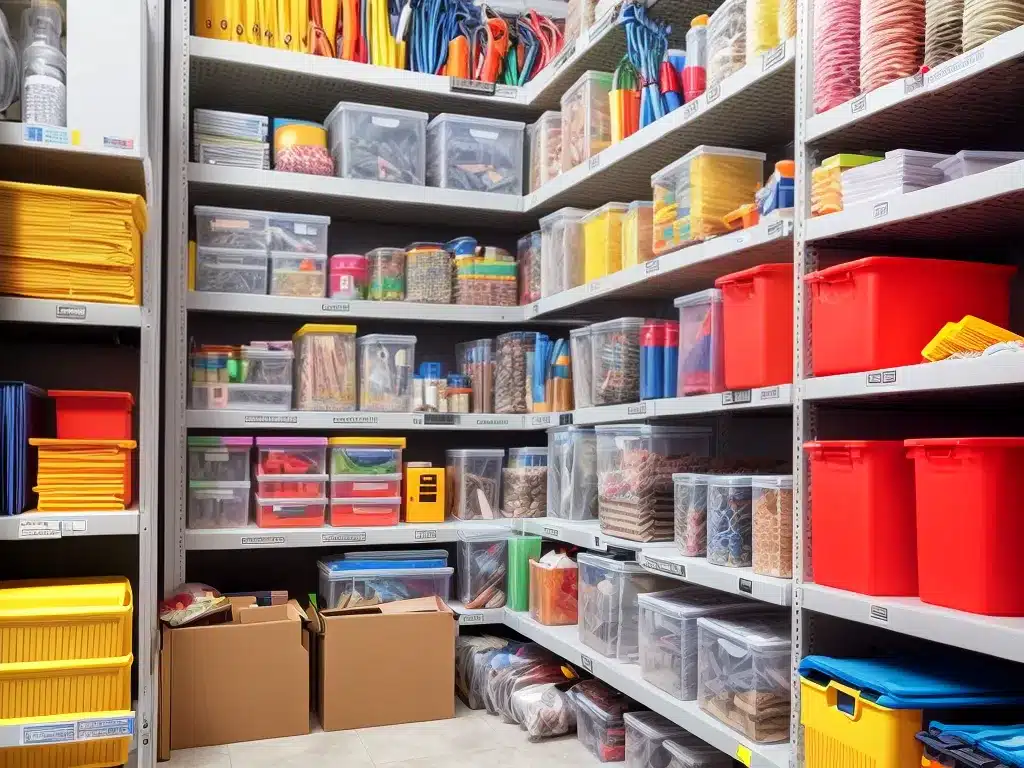
Running out of important supplies at inopportune times can create major headaches for any business. However, with the right inventory management strategies, you can avoid stockouts and keep your operations running smoothly. Here are some tips for keeping your inventory sufficiently stocked at all times:
Track Inventory Levels in Real Time
The first step to avoiding stockouts is to always know exactly how much inventory you have on hand. Real-time inventory tracking gives you up-to-date data on your current stock levels so you can anticipate needs before they become urgent.
Investing in inventory management software allows you to continuously monitor stock counts across multiple locations. The software integrates with scanners, sensors and other data sources to provide 24/7 visibility into inventory.
With real-time tracking, you can take proactive steps to replenish stock before you run out completely. This prevents the costs and chaos of reactionary restocking when supplies are already depleted.
Set Optimal Reorder Points
Reorder points are inventory levels that trigger a signal to replenish stock. Setting optimal reorder points for all your products ensures you order more before supplies are critically low.
Analyze historical usage data to calculate ideal reorder points based on average lead times and demand. Factor in elements like seasonal fluctuations and sales trends too.
The more accurately you determine reorder points, the less likely you’ll be to run out. But remember to build in a buffer as well – if 100 units is the reorder point, maybe set the trigger at 150 to be safe.
Streamline the Replenishment Process
When reorder points are reached, having an efficient restocking process is key to avoiding lapses in availability.
Automate purchase orders whenever inventory hits reorder levels. This ensures quick, timely reorders without relying on employees to remember.
Negotiate terms with suppliers to expedite deliveries. Prioritize suppliers that can quickly resupply products you need most.
Clear out delays on your end too. Designate employees to handle restocking tasks, ensure open purchase orders are tracked, and speed up stocking once deliveries arrive.
Improve Forecasting Accuracy
Even with reorder points, inaccurate demand forecasts can throw off your inventory needs. Sophisticated forecasting looks at historical data, sales trends and other signals to predict future demand.
Use demand planning software and statistical models to account for many variables in your forecasts. The more accurate the forecast, the better you can gauge required stock levels and minimize the risk of shortages.
Implement Safety Stock Buffers
Safety stock provides an extra buffer of inventory to mitigate risk when demand exceeds forecasts. Calculate adequate safety stock levels for each product based on volatility, lead times, and potential supply disruptions.
While too much safety stock inflates carrying costs, not enough can easily lead to stockouts when demand spikes or supplies are delayed. Find the optimal balance for your operation.
Create Transparency Around Inventory
Make inventory levels transparent across your organization. When everyone has visibility into current stock and knows the risks of shortages, they can help prevent and prepare for restocking needs proactively.
Share dashboards with supply chain, sales, finance and other teams. Encourage collaboration and timely communication around inventory requirements.
With the right technology, forecasting, and processes in place, you can gain control over your inventory. Smart inventory management optimizes turnover while avoiding costly stockouts and disruptions, keeping your business running smoothly.












